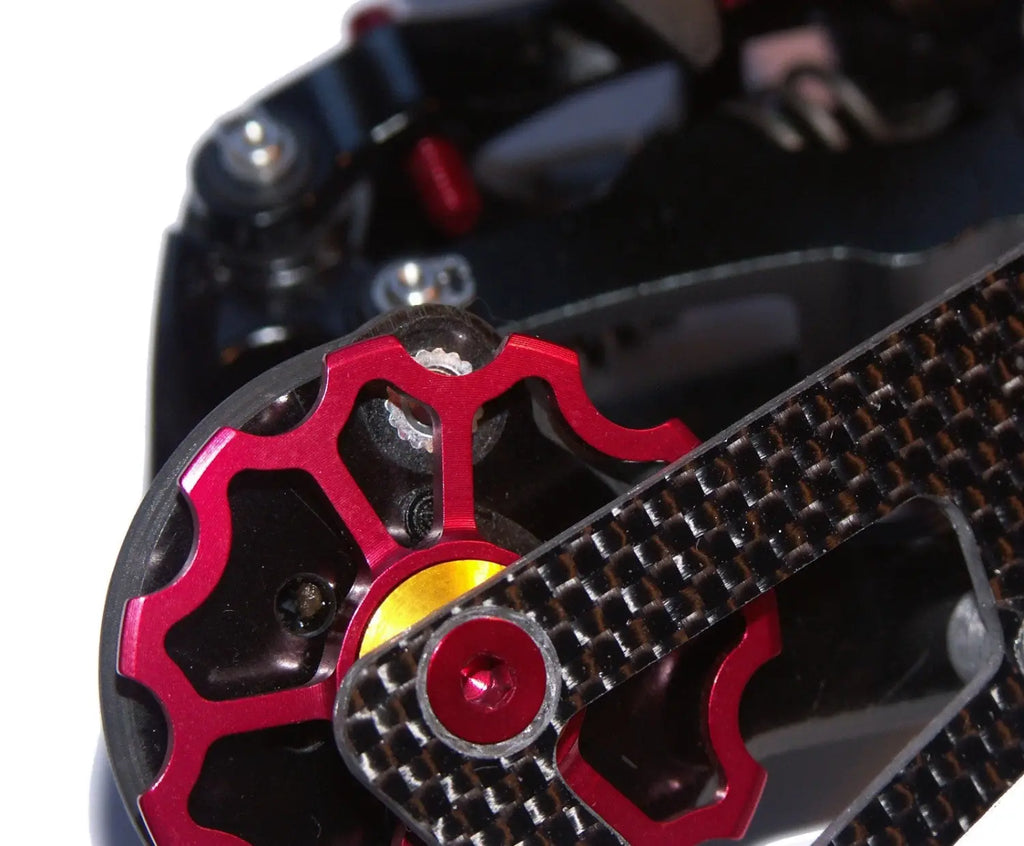What is the lightest bottom bracket? How much does this Kogel bottom bracket weigh? So and so bottom bracket is lighter, why is yours so heavy? We get a lot of questions about it and usually my answer is 'I don't know. Let me put that on the scale for you'.
We all want the lightest bike on the group ride. Let's see how Kogel products serve the weight weenies among us.
Weight of bearings
Bearings are made of steel, in the case of Kogel, the balls inside the bearings are made of Silicon Nitride, which is about 30% lighter than steel. One could calculate the weight savings on the total bearing, but it would add up to a number so small, it would easily be offset by the amount of grease we decide to put in during assembly.
A set of Kogel BB30 bearings weighs in at 45 grams with cross seals.
Bottom bracket weight
A bottom bracket has a tough job. It makes a connection between your crank arms and the frame, or indirectly your legs and the rear wheel. It is not unsimilar to a transmission in a car.
Now think for a second about the very small contact area between your bearing balls and the races. Think about the last time you were standing on the pedals and sprinting uphill for the eternal glory of reaching the town sign before anyone else. The pressure and torque in your bottom bracket is out of this world! I compared the transmission of a car because nobody likes that part to be flexy or under built. The loss in efficiency between the engine and wheels will be far more than the gains of putting a super light transmission in a car with big horsepower.

- The BB30-24 is one of the lightest bottom brackets in our collection, but only because we met a few restrictions when designing it. Solid and stiff should be key words when building drive train parts.
Bottom bracket are the same: we could save some weight by drilling holes in them and making the contact areas as short and thin as possible, but the result would be a bottom bracket that flexes and creaks under power. No bueno!
On another note, at Kogel we decide to build features in our bottom bracket that make them safe to remove once installed. These extra lips and bumps weigh a few grams, but we consider it material in the right places.
A kogel bottom bracket, depending on the model, weighs anywhere between 90 grams and 166 grams, if you're still counting.
Pulleys
Back in my bike shop days, one of my customers walked in with a derailleur tuning kit. I kid you not: a bunch of anodized aluminum screws, including the main hanger bolt and limit screws and a set of aluminum pulleys so light, you could barely see them if you held them up to the sun.
Being a good friend, I advised against it, but he was all set to make his derailleur lighter. The set held up until the first stretch of cobbles. Pulley collapsed, derailleur jumped into the spokes (remember that aluminum hanger bolt?) and things just got real expensive from there.

- It seemed like such a good idea at first......
Installing the lightest pulleys is not a smart idea. I have no clue what the weight of a set of Kogel pulleys is, but if you are interested I can put them on a scale.
Why lighter is not always better
When it comes to drive train parts, lighter is not always better. Flexing and failing parts in every single case will cost you more energy than the weight savings will gain. Be smart in your product selections and look for the sweet spot somewhere in the middle between super fragile and way overbuilt.

